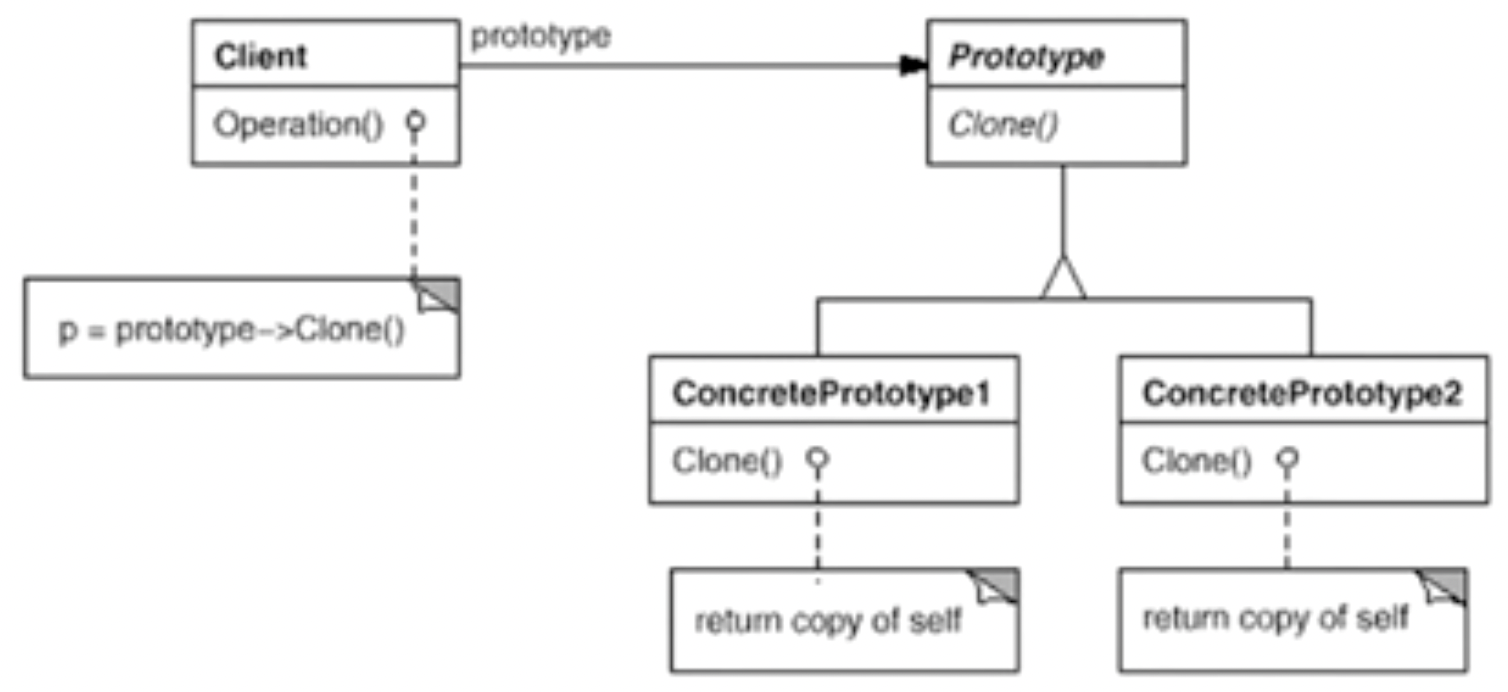原型模式
使用原型实例指定创建对象的种类,然后通过拷贝这些原型来创建新的对象。
示意图

示例代码
ts
interface Prototype {
clone(): Prototype;
operation(): void;
}
class ConcretePrototype implements Prototype {
clone(): Prototype {
return Object.assign(Object.create(this), JSON.parse(JSON.stringify(this)));
}
operation(): void {}
}
class Application {
prototype: Prototype;
constructor(prototype: Prototype) {
this.prototype = prototype;
}
operation(): void {
const cloned = this.prototype.clone();
cloned.operation();
}
}
// use case
const prototype = new ConcretePrototype();
const app = new Application(prototype);
app.operation();interface Prototype {
clone(): Prototype;
operation(): void;
}
class ConcretePrototype implements Prototype {
clone(): Prototype {
return Object.assign(Object.create(this), JSON.parse(JSON.stringify(this)));
}
operation(): void {}
}
class Application {
prototype: Prototype;
constructor(prototype: Prototype) {
this.prototype = prototype;
}
operation(): void {
const cloned = this.prototype.clone();
cloned.operation();
}
}
// use case
const prototype = new ConcretePrototype();
const app = new Application(prototype);
app.operation();优缺点
优点
- 可以使用原型实例指定创建对象的种类,通过拷贝这些原型来创建新的对象。
缺点
- 原型模式需要实现克隆操作,需要实现 clone 接口。
- 克隆方法可能会涉及到复杂的逻辑,例如循环引用、对象的序列化和反序列化等,这会增加代码的复杂度。
使用场景
- 当需要创建大量相似对象时,可以使用原型模式来避免重复的初始化过程。
- 当对象的构造过程比较复杂或者耗时时,可以通过克隆已有的实例来快速生成新的对象。